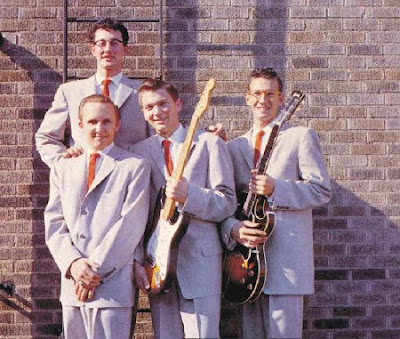
I have to admit, the title of Elijah Wald's book certainly grabbed my attention even though he comes up short on proving its assertion. I'm guessing that he doesn't even really believe that the Beatles "destroyed" rock and roll, but the hyperbole notwithstanding, he does demonstrate how their ascendancy in the 1960s corresponded with some significant developments in the creation, distribution and evaluation of popular music. But setting that aside for a moment, the real value in this book is the broad survey it offers on artists and styles through the first half of the twentieth century. Wald seems especially keen to rescue from oblivion the so called sweet bands who dominated the dance music market after World War I and remained prominent through the fifties, beginning with Paul Whiteman and Ted Lewis and running through Guy Lombardo and Lawrence Welk. These were orchestra leaders whose success and fame grew from their commitment to serving the needs of the dancers they played for in hotel ballrooms and at proms. The musicians who made their living that way could, as the occasion demanded, jazz things up, but they understood that their bread and butter was maintaining a solid, consistent beat for fox trotters and waltzers. Wald is right to recognize the prominence of these groups (as I know from dissertation research that led me to read virtually every issue of
Down Beat and
Metronome from back in the thirties), but doesn't quite convince that their longevity equated to artistic greatness. Actually, it's unfair to lay that criticism on him, since his primary goal really isn't to assert as much for those bands; rather, he wants readers to understand the musical environment in which such accomplishments occurred. In other words, he argues that true creative forces like Duke Ellington and Benny Goodman were dependent, both economically and artistically, on the health of an industry that was more multi-faceted than we often choose to remember. To build that argument, Wald spends time describing the relationship between live performance and records, jukeboxes and radio, and the effects of broader factors like the Depression or World War II that shaped the music business. It's a fairly comprehensive and very readable overview, and the omissions are few enough not to really affect his thesis. But that solid foundation, taking up fully three quarters of the book, makes it virtually impossible to back up the title, since the Beatles fit neatly into the evolutionary process Wald took such pains to describe. Or, to put it another way: the only way he can prove the Beatles destroyed rock and roll is to define that genre so narrowly that it discredits everything he writes about how jazz, swing, country and blues were endlessly evolving styles over several generations of development. So, chalk up the title to marketing, and enjoy the rest of the story Wald unfolds-- if only for recovering the reputations of so many forgotten performers. I know that it made me want to listen to a Paul Whiteman record for the first time in about twenty years, and I'm glad that I did.





















































